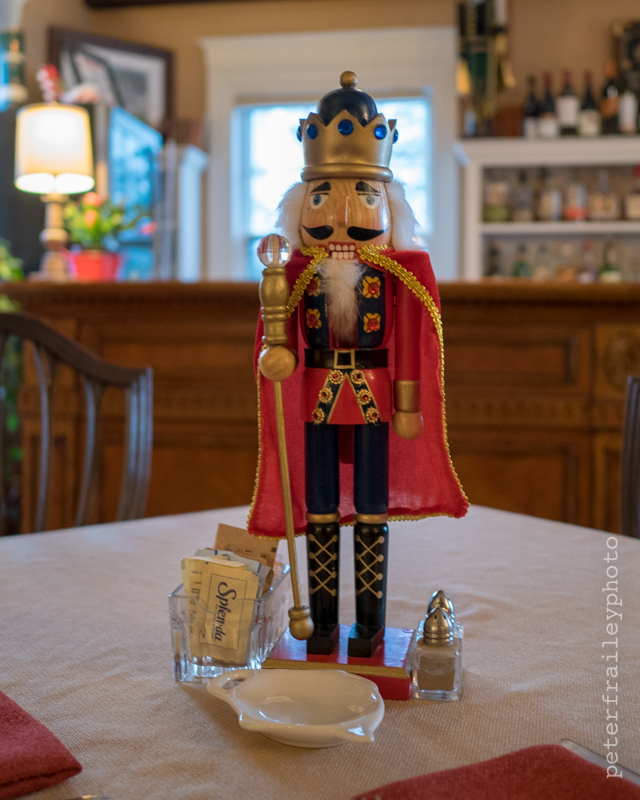Last week we thought it might be a nice break in the holiday madness to head to Maine to a bed and breakfast for a couple of mid-week days. We chose Brunswick because it is an area where we may relocate one day. We’re already somewhat familiar with the area because we drive through it on old Maine Route 1 several times a year, though never has that drive been in winter.
The Brunswick Inn was wonderful. With light Pandora-powered Christmas music in the background and ample decorations in the rooms, we felt like we were on the set of a Hallmark Christmas movie. The home was built in 1849 by the president of Brunswick Savings Bank. As an “esteemed” citizen of Brunswick, we read that Robert Bowker shared a pew at the First Parish Church with Harriet Beecher Stowe, author of Uncle Tom’s Cabin. That’s a nice little piece of Brunswick history.
The large addition in the back of the house, which can be seen in the photos below, was built in 1922 by a Bowdoin professor of International Law who wanted to hold student office hours and conduct seminars at home. This area is now the dining room. As you might guess, it was once lined with bookshelves, though as you can see only a few of the shelves remain today.
The house became a bed and breakfast in 1984. In the early years it was a four room inn. It has now been expanded to 15 rooms, each with a private bathroom. The current owners are Eileen and Jim Hornor, who have owned the property since May, 2009.
Comments about my photos:
All of these “Inn” images were taken with the diminutive Panasonic GM5 and Panasonic/Leica 15mm F1.7 prime lens, both thanks to an eBay purchase this fall. I enjoyed using the combo without a strap. I just slipped it into the pocket of my fleece vest. The camera has some limitations of course, in particular if you are looking for 4K video. I also don’t like the fact that there is no minimum shutter speed setting. When using aperture priority and auto ISO, it wants to maintain 1/60 second. Generally that is a good minimum speed, but with a 15mm (30mm equivalent) focal length, a slower speed like 1/30 could be useful. In Shutter Priority mode, 1/30 can be selected but of course you lose control of your aperture setting (the aperture ring on the 15mm becomes non-functional in Shutter Priority mode).
A partial workaround when shooting in light that requires an ISO higher than the base 200 (as in all of the indoor images here), is to use Manual Mode, setting aperture on the aperture ring at the desired setting and the shutter speed to 1/30. Auto ISO will then provide a reasonable exposure, the downside being that there is no way to select EV compensation with this configuration.
In Lightroom Classic CC, I only applied the new "Auto" tone feature. Just a 1-click adjustment! I did not touch the default Lightroom sharpening and I applied no noise reduction. I was quite pleased with the shots taken at high ISO.
ISO 200
ISO 400
ISO 640
ISO 800
ISO 1250
ISO 1600
ISO 2000
ISO 4000





























































